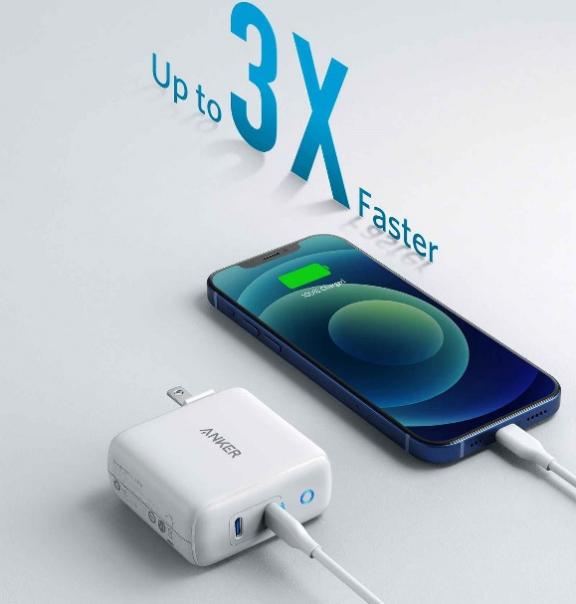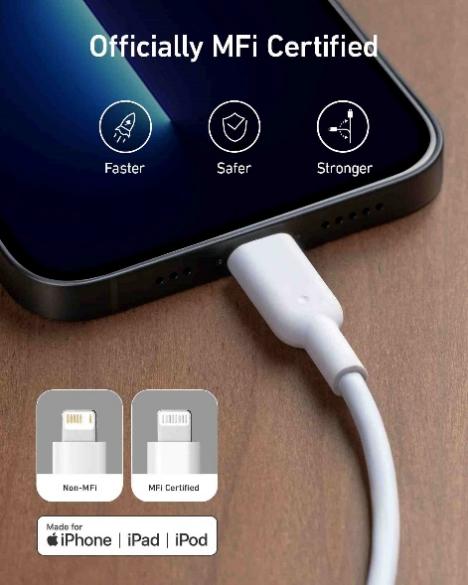There will be times when you need to quickly recharge your iPhone. Even though the iPhone's battery is almost empty, you still have time to get ready to leave the house. A wall socket or car charger can be just around the corner, so this might not be a big deal after all. However, there are times when a quick charge is very essential. This is the case, for instance, if you anticipate spending most of the day away from home in places where charging is difficult or impossible. Here are some tips for charging your iPhone as rapidly as possible, no matter the circumstance.
How to Charge Your iPhone Faster
Despite the seeming simplicity of this piece of advice, turning off your iPhone can be trickier than you'd think. It can be uncomfortable to be cut off from your texts, emails, messages, and the ability to take notes, calls, and reminders, even if just for a short time. This is especially important if you are frequently traveling for work and need to report in.
However, if you turn off your phone, it will charge much more quickly because it won't have to work as hard to keep up with everything you're doing. Get some work done on the computer by turning off your phone, plugging it into the charger, and relocating to a separate room, if possible.
Fast charging has been standard on all iPhones and iPads since the release of the iPhone 8 in 2017. It's a function that works with both official and third-party charging accessories.

You can use any USB Power Delivery (PD) compatible charger, including those made by Apple, or by third-party manufacturers. A power cable compatible with both Lightning and USB-C will also be necessary. This apple charger and cable set will allow you to get roughly half a charge on your iPhone in about 30 minutes. Depending on the manufacturer, certain goods can charge up to 2.5 times faster.
If you can't power down your iPhone fully, switching to airplane mode is the next best thing.
One of the biggest drains on the iPhone's battery is its cellular connectivity. Our mobile devices are always on the search for the nearest cell tower when we aren't linked to a Wi-Fi network. To find the towers, your phone broadcasts radio waves and constantly checks the quality of the signal to figure out how close it is. This will provide you with the most reliable link available. When there are fewer towers in the area, your phone will have to exert more effort to send more powerful signals, which uses more energy.
Like the Airplane Mode, your iPhone's Low Power Mode can reduce power consumption to facilitate rapid charging. Most unnecessary processes in the background are temporarily decreased or halted when the Low Power Mode is engaged.
Some visual effects, iCloud, and 5G usage will be disrupted, as will auto-lock, auto-fetching of email, and automatic downloads. It also prevents the "background app refresh" feature from working, which lets inactive programs check for updates and new data periodically.
To get the most out of your iPhone while it's charging, you should keep it in a cool place. To accomplish this, one must shield the iPhone from the sun's rays as well as the heat it generates. It's important to remember to keep the device out of direct sunlight and off hot surfaces like the tops of appliances.
You must avoid running any programs that could raise the device's temperature while it is charging. You should avoid playing resource-intensive mobile games while charging your phone because of the risk of overheating.
Wireless chargers sacrifice power efficiency for convenience. If you require a quick charge, you should probably go elsewhere. Despite the ease of wireless charging, traditional wired charging is far faster.

You can check the MagSafe Charger's wattage output that comes standard with your Apple product if you're unsure. According to the product page, it can supply up to 15W of power, while standard cable chargers can provide up to 30W or even 60W.
Conclusion
With these tips in place, you should be able to charge your iPhone more rapidly and avoid many power outages. You have the option of conducting tests to find the optimal combination of strategies for your needs. However, if you still have trouble charging, you should probably examine your phone. If you're using an older smartphone, the battery may not be in as good of shape as it once was.

